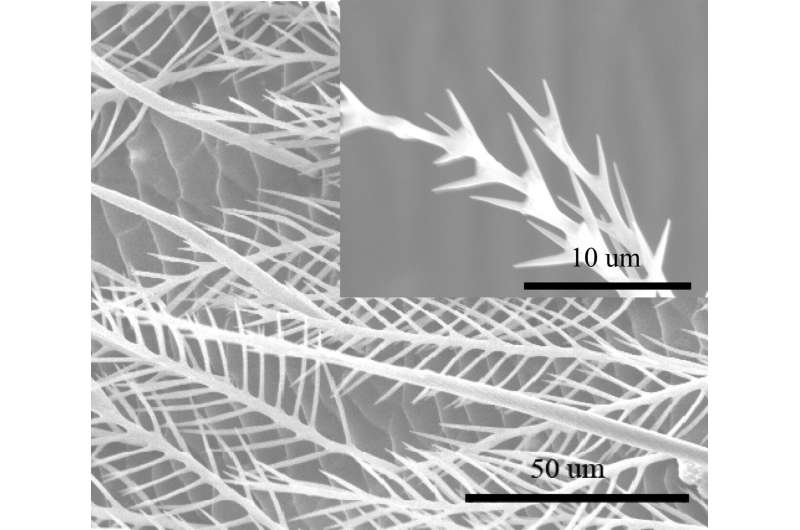Honeybees' hairy abdomens show how to save energy, reduce wear on materials

Watching honeybees buzz among flowers, it's easy to see how the expression "busy as a bee" arose. One of many movements a bee's body makes is the repetitive curving and straightening of its abdomen. Now, researchers reporting in ACS Applied Materials & Interfaces have found that tiny hairs reduce friction from these motions, saving energy for the industrious insects' daily activities while reducing wear and tear. This knowledge could help researchers design longer-lasting moving parts.
A bee's abdomen is divided into several tough outer plates that make up its exoskeleton. When the abdomen flexes and extends, these segments slide over each other, creating friction. However, the overlapping portions of the segments show very little wear and tear, a finding that has puzzled scientists. Jieliang Zhao, Shaoze Yan and colleagues wanted to investigate the anti-friction mechanism of the honeybee abdomen, which could someday be used to extend the lifetime of engineered soft devices, such as actuators and hinges.
The researchers observed honeybee abdomens under a scanning electron microscope, finding numerous branched hairs on the outer surface. Then, using atomic force microscopy, they measured the friction caused by moving an exoskeletal segment across either a hairy or hairless surface. Under the same load, the friction for the hairy surface was lower than that for a smooth surface. As the load increased, friction for the hairless surface rose, whereas no obvious rise in friction was observed for the hairy surface. The researchers calculated that the hairy surface reduced abrasion during abdominal contraction by about 60% and also saved energy with each contraction. This adds up to a large amount of conserved energy that is essential for conducting bees' daily activities, the researchers say.
More information: Mingyue Wang et al, Hairy-Layer Friction Reduction Mechanism in the Honeybee Abdomen, ACS Applied Materials & Interfaces (2021). DOI: 10.1021/acsami.1c05500
Journal information: ACS Applied Materials and Interfaces
Provided by American Chemical Society




















